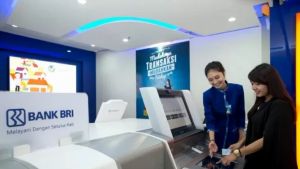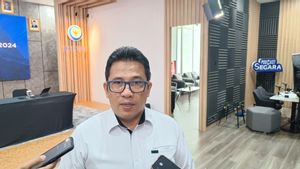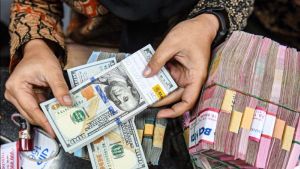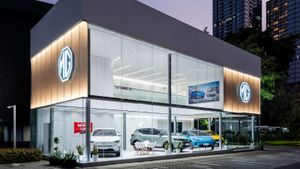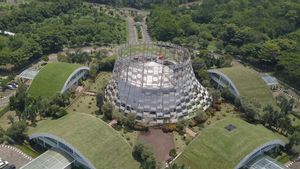JAKARTA - Directorate General of Housing of the Ministry of Public Works and Public Housing (PUPR) Iwan Suprijanto said the application of green material (green material) to the development of the capital city of the archipelago or IKN in East Kalimantan could reduce carbon emissions.
"The development of IKN, which is based on the principle of reducing risks to climate change and disasters, has implemented one of the key aspects in supporting the implementation of a low-emission policy or net zero emissions," Iwan said as quoted by ANTARA, Monday, April 22.
Iwan added, this is done by prioritizing the use of building materials with energy consumption and low-carbon embodied carbon tracks derived from local sources or recycled products, as well as using materials and technology with positive environmental impacts or with minimum loss rates.
"The transfer of the nation's capital could have an impact on reducing carbon emissions in East Kalimantan by 18 percent, which could indirectly change the economic structure of the region, from the beginning which more tended to economic dependence on natural resources to economic dependence on services and services," he said.
Several construction material manufacturers have developed their product technology in order to meet the criteria for green material construction, where the process of making construction materials and components/materials used has a better environmental impact than conventional materials.
Iwan said that a number of green construction materials have now been developed by domestic companies and have been used in development at IKN, such as hypoulis cement products that have lower clinical content which makes the resulting carbon emissions lower than conventional cement.
Then paint with a low volatile organic compound (voc) component and contains plant-based materials that can reduce the overall footprint of carbon.
Utilization and use of green construction materials in building work projects, to reduce the amount of greenhouse gas emissions generated from the building and housing sectors.
"The concept of the Smart Forest City (Smart Forest City) at IKN is expected to further support efforts to reduce carbon emissions, especially through the implementation of sustainable construction, one of which is the use of environmentally friendly construction materials in line with the Minister of PUPR Regulation Number 9 of 2021 concerning Guidelines for the Implementation of Sustainable Construction," said Iwan.
Based on the Attachment of Law Nomo3 of 2022 concerning the IKN Main Plan, it states that the basic principles of regional development in IKN are based on the principles of IKN development that prioritize nature, technology, and environmental sustainability. IKN planning is established with a sustainable concept to balance natural ecology, the environment is built, and the social system is harmoniously.
In addition, the basic principle of IKN development also maintains the possibility of poor urbanization impacts and extreme weather that can increase the risk of disasters, such as floods and raw water shortages.
Therefore, the basic principles of developing the IKN Area will combine three urban concepts, namely IKN as a forest city, a sponge city, and a smart city.
SEE ALSO:
Development of the IKN area and all three urban concepts cannot be separated from partner cities around other IKNs and will not succeed without the support of the surrounding cities.
Thus, the implementation of IKN as a forest city, a sponge city, and a smart city must prioritize harmonious cooperation with the surrounding partner cities.
The English, Chinese, Japanese, Arabic, and French versions are automatically generated by the AI. So there may still be inaccuracies in translating, please always see Indonesian as our main language. (system supported by DigitalSiber.id)



